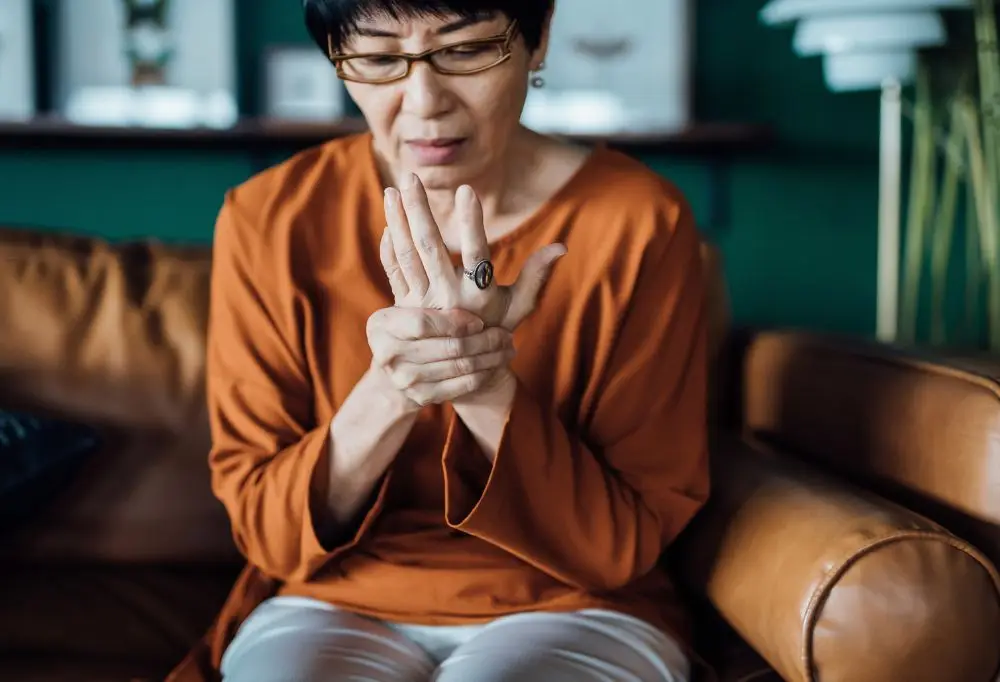Are you experiencing unpleasant perimenopause or menopause symptoms and are ready to find relief? While menopause is a transition your body is getting used to, there are many resources, treatments and options out there available to make things easier. Here, we discuss the various methods of hormone therapy to address perimenopause and menopausal symptoms, so you can get back to feeling like yourself.
What is Hormone Replacement Therapy?
Hormone replacement therapy (HRT) is a medical treatment for women who are going through menopause to help them manage symptoms. As estrogen levels begin to drop and the body stops producing eggs, women experience a myriad of uncomfortable symptoms, including: hot flashes, night sweats, insomnia, urine leaks, mood swings, vaginal dryness, low libido, and painful intercourse, as well as depression or irritability.
HRT works by replacing the hormones your body is no longer making enough of to help alleviate those range of symptoms. Then, you’ll feel more comfortable physically and emotionally, sleep better, and enjoy a better sex life.
What are the two types of Hormone replacement therapy (BHRT and HRT)?
There are two different kinds of bioidentical hormone therapy for menopause. We break down the differences below:
HRT
Also known as “traditional” hormone replacement therapy, HRT uses synthetic, lab-created hormones made to induce a similar effect on the body as the actual hormones themselves, but it isn’t an exact chemical match. They are strictly regulated by the FDA and may even prevent osteoporosis.
BHRT
BHRT is another form of hormone replacement therapy that uses naturally-derived sources. Called Bioidentical Hormone Replacement Therapy, it uses processed hormones that come from plants, such as yams or soy. BHRT is chemically identical to the hormones your own body naturally produces. Both men and women can use BHRT and it’s treated for perimenopause and menopause, insulin resistance and to improve symptoms for cancer treatment.
When seeking BHRT treatments, there are two options to consider: estrogen therapy and combination therapy.
Estrogen Therapy
Estrogen therapy only has estrogen in it, targeting the issue of declining levels (or no) estrogen in the body. This therapy is great for women who’ve had a hysterectomy (surgical removal of the uterus), since progesterone protects the uterine lining. Those without a uterus do not need that extra hormonal support. Estrogen treatment comes in many forms, and can be taken orally, vaginally or topically.
Combination Therapy
This therapy replaces estrogen, progesterone, and testosterone as well, mirroring the natural hormonal balance in women. This therapy is used for women who still have a uterus intact. Estrogen helps manage uncomfortable perimenopausal or menopausal symptoms, while progesterone protects the uterine lining from potential risks of endometrial cancer.
How to take it
BHRT comes in the form of: pellets, troches, patches, pills, topical creams and gels and injections. Talk to your healthcare provider to discuss which form is best for you.
Bioidentical Hormone Replacement Therapy for Menopause
BHRT has been proven to improve less-than-desirable physical and emotional symptoms caused by menopause in a safer and more natural method. Symptoms such as night sweats, hot flashes and low moods due to the drop or loss of estrogen are significantly improved when the hormone is replaced with BHRT. Bioidentical hormone replacement therapy for menopause is a wonderful solution for those who want a natural alternative to synthetic hormone replacement therapy. It’s important to discuss your options with your healthcare provider depending on your symptoms and your goals.
What are the Risks of Taking Bioidentical Hormone Replacement Therapy (BHRT)?
Although bioidentical hormone replacement therapy isn’t as closely regulated by the FDA, studies show it’s safe and effective. Medical literature suggests that progesterone found in BHRT does not have a negative effect on blood lipids or vasculature as do many synthetic forms, and both bioidentical estrogens and progesterones suggests a reduced risk of blood clots compared to non-bioidentical variations. And, although not all BHRT therapies have been tested by the FDA, estradiol, (Estrace, Climara, Vivelle) and the progesterone product Prometrium have been approved by the FDA, as well as some other BHRT treatments out there. Because bioidentical estrogens and progesterones completely mimic the cellular structure of these hormones, there’s less risk involved.
Benefits of Bioidentical Hormone Replacement Therapy
There are a myriad of health benefits from taking BHRT treatment. When the body receives the appropriate hormones it needs, it thrives better. Benefits include:
- A better night’s sleep
- Stronger sex drive
- Healthier skin, hair and nail growth
- Decreased feelings of anxiety or depression
- Having more energy throughout the day
- Decreased night sweats, hot flashes and other symptoms of menopause
What are the Side effects of Bioidentical hormone replacement therapy (BHRT)
As your body adjusts to the new levels of hormones it’s receiving, you may experience some side effects during the process. This includes:
- Tiredness
- Blurred vision
- Mood changes
- Headaches
- Breast tenderness
- Sleep disruption
- Weight gain or loss
- Facial hair growth for women
If you’re experiencing menopausal symptoms that are impacting your day-to-day life, you may be wondering if hormone therapy is an option for you. The decision to try hormone therapy is a very personal one, and BHRT, just like other forms of HRT, is not for everyone. Explore all the treatment options available with your healthcare providers so you can find the best remedy for you.
FAQs
You can’t determine a specific “hormone type” on your own. Consult with your physician to assess any hormonal imbalances. This will be conducted through a consultation, physical exam and blood tests.
There are many hormonal therapies out there, and a great hormone replacement therapy natural alternative is Bioidentical Hormone Replacement Therapy. Similar to traditional HRT, BHRT uses plants and natural sources that directly mimic hormones found in the human body. Consult with your physician to assess what’s right for you.
Although the two are similar in their effect, traditional hormone replacement therapy uses synthetic, lab-created hormones made to induce a similar effect on the body as the actual hormones themselves, but it isn't an exact chemical match. Bioidentical hormone replacement therapy uses processed hormones that come from plants, such as yams or soy. They are chemically identical to the hormones your own body naturally produces.
Hormone therapy for menopause has been proven to improve less-than-desirable physical and emotional symptoms caused by menopause. Symptoms such as night sweats, hot flashes and low moods due to the drop or loss of estrogen are significantly improved when the hormone is replaced by hormone therapy.
The timing will vary from woman to woman, but typically women should consider hormone therapy during the perimenopause or menopause period, when they’re experiencing symptoms such as night sweat, hot flashes, vaginal dryness and more. Discuss with your healthcare provider when the best time is for you, depending on your health history and age.
Before altering your hormones through hormone therapy, it’s important to assess your current hormone levels first. A hormone test creates a baseline of your current hormonal status, and will give you information of what hormones you’re deficient in. From here, your doctor will prescribe whether or not BHRT is suitable for you right now. Keep in mind, not all menopausal symptoms are caused by estrogen deficiency alone.
Although bioidentical hormone replacement therapy isn’t as closely regulated by the FDA, studies show it’s safe and effective. Medical literature suggests that progesterone found in BHRT does not have a negative effect on blood lipids or vasculature as do many synthetic forms, and both bioidentical estrogens and progesterones suggests a reduced risk of blood clots compared to non-bioidentical variations
Although the main goal of hormone replacement therapy isn’t about aesthetics, it can make you look younger due to its estrogen-boosting properties. Increased estrogen can improve skin, hair and nail health, increasing hydration and skin firming, and it can help maintain bone density, giving a more youthful look.
Hot flashes, night sweats, pain during sex, vaginal dryness, low energy, insomnia, absence of having a period, and mood issues are some of the most common symptoms of low estrogen.
Although it’s not directly correlated, studies show decreased Vitamin D levels are also related to decreased estrogen, and increased Vitamin D result in increased estrogen, suggesting a synergetic role between the two.






